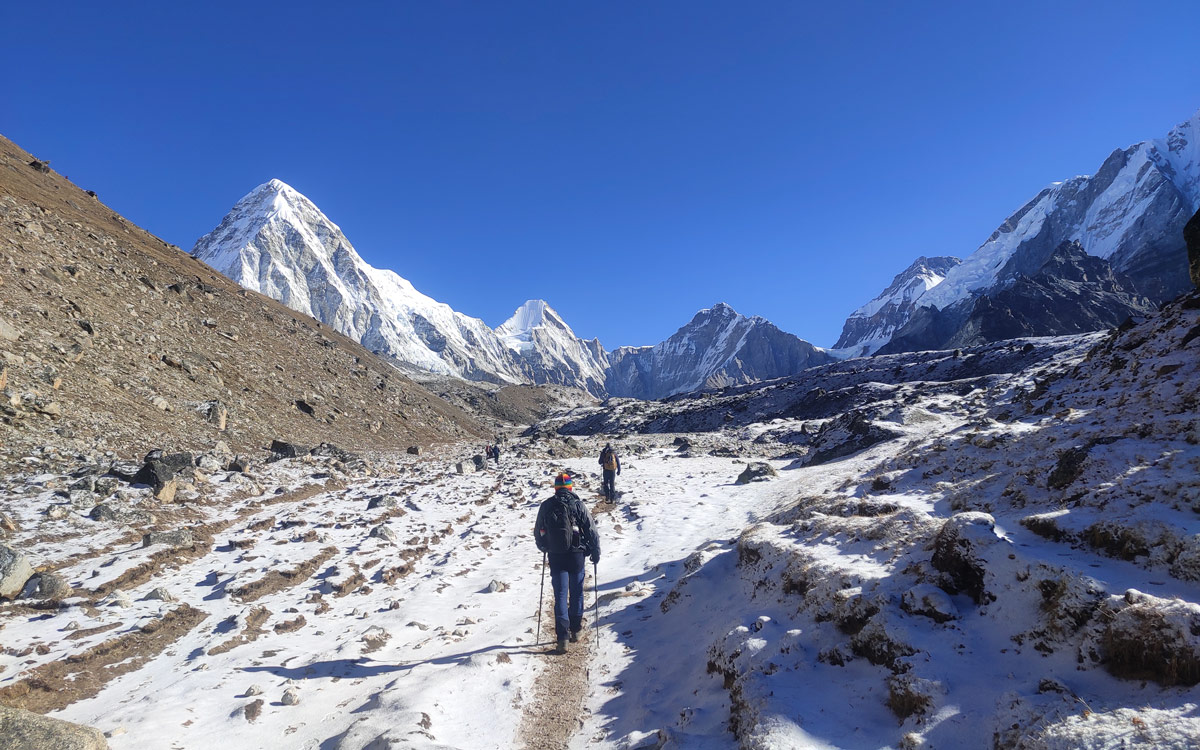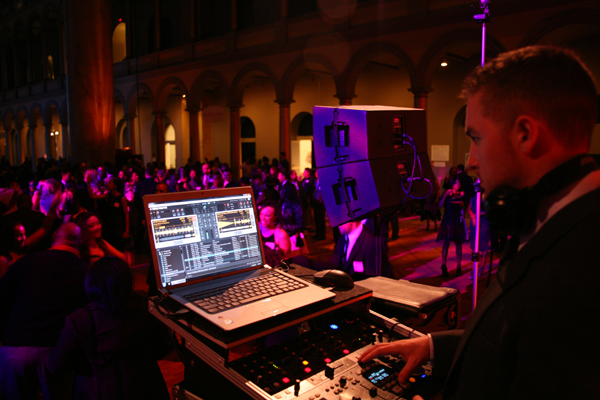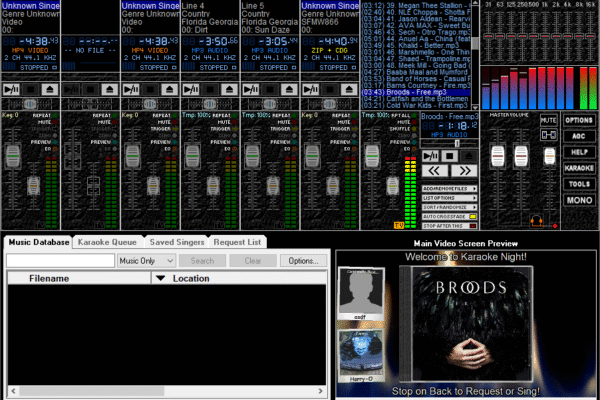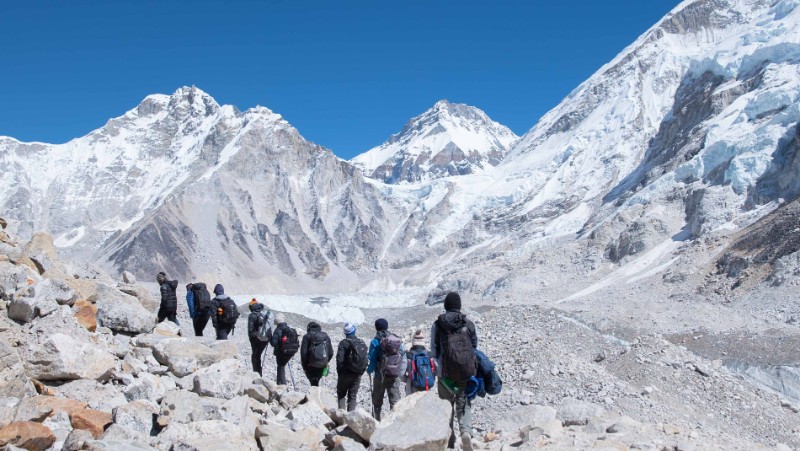
How to Prepare Your Mind for the Everest Base Camp Trek
The Everest Base Camp is once in a life experience and a well-organized trek. We’re here to sit you down and give you the 411 on what you need to know to ensure that you make the most of it on the trek, from the physical demand required and the kit you’ll need to knowing the logistics and staying safe. Today, I bring you a comprehensive guide to ten categories that will guide you on how to be prepared before planning an adventure, from your Jungle Book to The Land of Enchantment.
Day-to-Day on the Trek: The Traditional Route
A typical EBC Trek with acclimatisation days, this will be around 12/14 DAYS. The descent keeps to Tengboche and its famed monastery, and to Dingboche, wherein you’ll have the second acclimatization. The very last enhancement is to Lobuche and Gorak Shep, the closing teahouse village before the closing prize: Everest Base Camp. The final morning is spent trekking to Kala Patthar, where you’ll get to see one of the most wonderful sunrises over Everest. On the way back, you will come down much faster on the return and then back down to Lukla.
Physical Training: Preparing Your Body For Altitude
The Everest Base Camp does not reasonably involve any technical climbing, but it is a lung-burning, multi-day hike that will test your fitness. Develop leg power: How to build up leg strength and cardiovascular fitness (running) in a few easy steps. At the very least, you want to begin a training program 12 weeks out and train through long-distance hiking, jogging, and stair climbing. You’ll also need to train by doing hikes with a weighted daypack so your body is familiar with the load. The constant grade of the hike is compounded by the high elevation, so the most athletic among us should not push too hard.
When to trek- explanation of seasons. The exceptional time for the Everest Base Camp Trek is spring (March to might also) and autumn (September to November). It’s miles because the climate throughout those months is steady with harvesting months, where the sky is clear and the view of the mountains is clear. Inside the spring, the hillsides are covered with blooming rhododendrons, which shape a terrific carpet of color in the lower valleys. The fall, after the monsoon, when the sky is clear and crisp, the perspectives are extraordinary. You may hike in wintry weather, but it’ll be very cold, and the paths might also have snow on them. The monsoon (June – August) is also unpleasant because of the rain and resulting muddy conditions, rubbish views.
Guide and Porter – Your fundamental Trip Supporter.
New regulations from the government have now required all foreign trekkers to be accompanied by a registered guide, so I was left to dream about the days of independent trekking. A guide is more than a way-finder — they are your cultural interpreter, your logistical assist, your advocate in a medical or legal emergency. If you have the money, porters to carry the bulk of your luggage are also highly recommended, as it allows you to focus on the hike with nothing more than a light day pack on your back. Many trekkers prefer to hire their own porter, who will also act as a guide for the same cost. It just makes it a bit more personalised and conversational.”
Trekking allows: The vital paperwork.
To trek within the Everest region, you will need to acquire essential allows: the Sagarmatha countrywide Park entry allow and the Khumbu Pasang Lhamu Rural Municipality entry permit. The Sagarmatha countrywide Park allow can be obtained in Kathmandu or at the entrance of the park at Monjo. It is possible to purchase a Khumbu permit (Women’s project ticket) either from Lukla or Monjo. Bring these with you as you will be asked to show them by rangers on the trail. I was told to show you around, if possible, and to give you anything you need for your journey.
Altitude sickness: safety and Acclimatization
The greatest chance for your fitness whilst hiking to Everest Base Camp is Acute Mountain Sickness. It takes place while a person ascends too quickly to an excessive altitude without permitting sufficient time to acclimate. Signsnss and symptoms can encompass a headache, nausea, dizziness, and tiredness. The pleasant manner to manage AMS is to ascend gradually, pay attention to your frame, and by no means ascend if you are feeling ill. Descending straight down is the only treatment for severe AMS. Your trek schedules you have received are planned for good with sufficient acclimatization days, and it should be your best friend during your trek and save you.
Packing Essentials: What Gear to Take and Weather to Expect
What it comes down to, more than anything else, is in the packing, which is often the key to a smoother trek. The top rule is to layer up. You’ll need to cover your appendages, so you’ll also need a heat hat, gloves, and top wool socks. Before you reach the utilities, etc, you’re going to have to handle cold, muddy, fresh-air type stuff. YOUR WELL-BROKEN-IN W/PROOF TREKKERS, your main tool to have! Other essential items would be a good sleeping bag -10/-20° °Cc, a head torch, and your own personal first-aid kit.
The Cost of the Trek: Inclusions and Why The inclusion and why?
The Overall Cost of the EBC Trek is manageable for you in different options, as per your trek style, from budget to luxury. A comprehensive guided package generally costs $1,200 to $2,000 per head. That’s usually including guide, porter, permits, accommodations, and food.
Food & Lodge: Life in the Teahouses, the Everest Base Camp path, you’re drowsing in teahouses, easy mountain inns. The rooms are no-frills, usually with two dual beds and shared lavatories. There are meal menus full of standard tea-residence nosh, so count on the meals to provide you with the carbohydrates that you’ll be wanting. Dal Bhat, Nepal’s traditional food, needs to be eaten # and is needed for the trekkers. The overall advice of most courses and locals is to go vegetarian at the better altitudes. Hydration is a should, so make certain to water and hot tea.
More perspectives and Highlights from Everest Base Camp
The intention is to attain the Everest Base Camp Trek, but the adventure by myself is packed with extremely good sights and surroundings. Mount Everest View from Kala Patthar. The view of Mount Everest from Kala Patthar is absolutely the maximum popular and valued mirror image of the adventure. The religious atmosphere and outstanding mountain view at Tengboche Monastery are also a must-see. You’ll clomp through it in Namche Bazaar, on an acclimatization day that opens onto one of the finest views of Everest: that up the mountains from the hike to the Everest View Hotel. There are some incredible views of Ama Dablam (6856m) along various points in this section.



